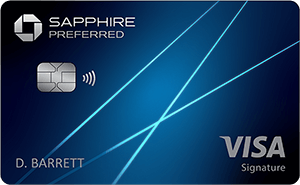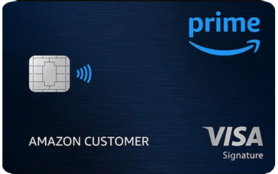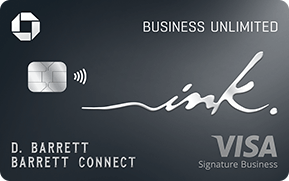Overview
If you’re a new driver or just bought your first car, you probably have all the feels right now. You’ve just finished answering dozens of questions and signing stacks of paperwork at the car dealership. One question the finance manager probably asked is, “Do you have a current car insurance policy?”
Ideally, you shopped around for insurance before you paid for the new car. But if not, you can’t drive it off the lot until it’s insured. Car insurance protects your financial interests if you’re in a car accident. But there’s a lot to know beyond the basics when you shop for your first policy.
What Is Car Insurance?
Also known as auto insurance, your policy covers some or all of the costs if you are held liable for vehicle or property damage or if another party is injured in a car accident while you’re driving.
Different types of car insurance cover different aspects of a car accident, including medical bills and loss of work, property damage, and vehicle repairs or replacement. Understanding the different types of coverage is the first step to shopping around for an auto insurance policy.
Types of Car Insurance
When you’re shopping for car insurance, you’ll look at three different types of coverage: liability, collision, and comprehensive.
Understanding what each one offers, as well as the additional categories, can help you choose the best policy for you. Every state except New Hampshire requires drivers to carry a minimum liability policy; it’s highly recommended in New Hampshire, too.
Liability coverage
Liability coverage protects your financial interests if another party is injured. It also pays for their property, including their motor vehicle, if that’s damaged in an accident you caused. For instance, if you drove through someone’s fence, your property damage protection coverage should pay to replace or repair it.
In at-fault insurance states, if someone is injured in a car accident and it’s deemed to be your fault, your bodily injury coverage will pay their medical costs. If you live in one of 12 no-fault states, however, a driver or passenger’s injuries should be covered by the driver’s Personal Injury Protection coverage.
Note: “No-fault” only applies to injuries, not to property damage. Also, liability coverage only pays for property damage to the other party’s property if you caused the accident; it doesn’t pay for damage to your own vehicle.
Collision
While liability pays for damage to other people’s property, collision coverage pays for damage to your vehicle. Collision is optional coverage, but if you lease a car or have a car loan, your lender may require collision coverage up to the value of your car. Gap coverage, which lenders may also require, covers the difference between the cash value of your car and the amount you owe on the loan.
Comprehensive coverage
Collision coverage pays for property damage caused by an accident. Comprehensive coverage pays for theft or damage to your vehicle caused by fire, hail, vandalism, and other covered perils. As with collision coverage, a lender or leasing company might require comprehensive coverage to protect their investment.
Other types of auto insurance coverage
There may be other types of coverage in your policy, too. Some of these are optional and some, like uninsured/underinsured motorist coverage, may be mandated in some states.
Other optional coverage types include:
Rental car reimbursement
Towing and roadside assistance
Glass coverage
Medical payments
Personal Injury Protection (required in some states)
Rideshare coverage (for Uber or Lyft drivers)
How to Shop for Car Insurance
Your search for car insurance can start online or by asking family and friends for recommendations. Often, word-of-mouth will help you find a trustworthy and affordable car insurance company in your area.
If you want to quickly receive quotes from many different companies to compare prices and coverage levels, you’ll want to begin shopping online. Compare car insurance quotes on sites like Coverage.com.
Information you need for car insurance quotes
Before you start signing up to get quotes from various insurance agencies, you’ll want to gather the necessary paperwork and information. This includes:
Your driver’s license and the license for other drivers in your household
Your social security number
Vehicle Identification Number (VIN)
Vehicle registration
Make and model of car
Safety features on the vehicle
Existing coverage levels and premiums (if you are insuring a car that’s already on your policy so you can compare pricing)
Comparing car insurance carriers
If you’re shopping through a company or website that works with multiple insurance carriers, be prepared for a barrage of phone calls, emails or texts providing you with a quote from each company.
Once you’ve gotten quotes from a few different car insurance companies, compare coverage levels, deductibles, and premium rates. You may be able to reduce your premium costs by increasing your deductible or reducing your coverage, but make sure you’re carrying enough coverage to protect yourself financially in the event of an accident.
You may also be able to save money on your car insurance by:
Paying upfront for six months or a year
Signing up for automatic payments
Agreeing to install a telematics device in your vehicle
Taking a defensive driving course
Being a student with good grades
Also ask about safe driver discounts and features like accident forgiveness, which means the company won’t raise your rates after your first claim.
Choosing the Best Car Insurance Company
It might be tempting to choose the car insurance company that offers you the lowest price, regardless of other factors. But there are other things to consider.
First, make sure the company is reputable by checking its financial security ratings. Agencies like Standard & Poor’s, A.M. Best, and Moody’s rank insurance companies based on their financial stability. Also, look at Better Business Bureau ratings and read consumer reviews to assess the company’s customer service.
Look into the claims process. Does the company have an easy process for online claims? Is it possible (and easy) to speak to a human being if you need help?
When you purchase car insurance, you want to make sure they will stand by you when you have to file a claim.
The Point
When you start driving for the first time, you’ll need to shop for an auto insurance policy. Understand the different types of coverage and how to choose a car insurance company to save time and money before you get on the road.









 by your friends at The Daily Navigator
by your friends at The Daily Navigator



